





Your one-stop-shop
gilmours.co.nz
 ITania Walters Publisher
ITania Walters Publisher
n 2023, ACT said it wanted to end “wasteful policies” like free school lunches, but National said it supports the scheme, saying it’s a “good programme”.
“A recent report showed the ‘free’ school lunch programme wasted $25 million in lunches yearly.
“The Treasury found that up to 10,000 ‘free’ school lunches are wasted daily. The programme’s cost in 2021 was $211 million, meaning up to $25m was wasted on surplus lunches.
“Treasury also found no evidence the programme was improving attendance or benefiting Māori, who make up half of the students in the programme”.
Seymour said the programmes were unaffordable as New Zealand was “headed for a massive fiscal crunch”.
Through Budget 2023, the Government has provided funding to continue the Ka Ora, Ka Ako programme for a further year until the end of December 2024. In 2020, in response to the COVID-19 pandemic, Ka Ora, Ka Ako was expanded to include around 214,000 secondary students.
We have yet to hear more from the coalition government on what will
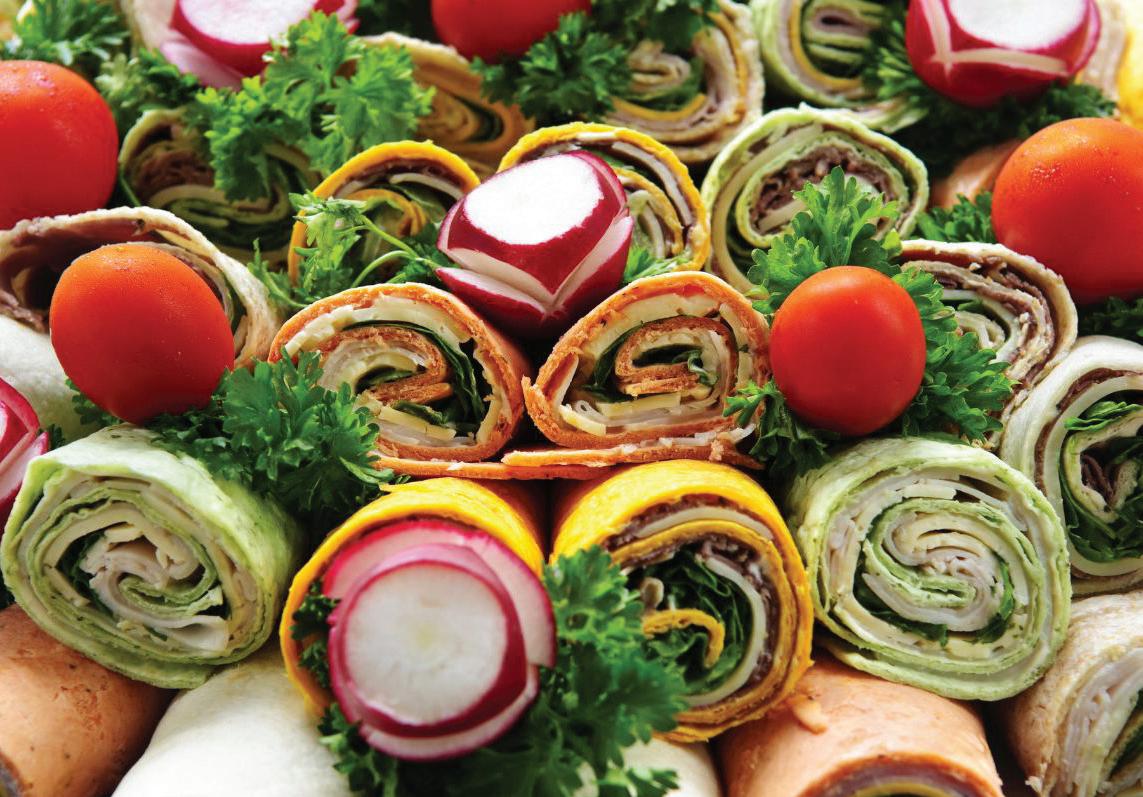
happen to the school lunch programme, but one would hope it will continue in some way.
Research indicates that reducing food insecurity for children and young people:
• improves wellbeing
• supports child development and learning
• improves learners’ levels of concentration, behaviour and school achievement
• reduces financial hardship amongst families and whānau
• addresses barriers to children’s
participation in education and promotes attendance at school
• boosts learners’ overall health.
The school lunch programme provides more than just food. Socially, it’s the right thing to do, but the programme certainly needs tweaking to reduce waste in terms of food and money.
Tania Walters, PUBLISHERThe National Health Survey, last completed in 2019-2020, found only 44 percent of students aged from two to 14 years have an adequate fruit and vegetable intake. Ministry of Education leader of operations and integration, Sean Teddy, is convinced that the healthy school lunch programme, Ka Ora, Ka Ako, is part of the reason.

The Ka Ora, Ka Ako programme has aimed to reduce food insecurity by providing access to a nutritious lunch in school every day. The programme is targeted at the top 25 percent of students in schools and kura facing the greatest socio-economic barriers nationally, as determined by the Equity Index. This has removed barriers to participation and achievement

more than 3,000 jobs had been created or retained.
A comprehensive evaluation and research programme has supported the Ministry of Education to understand the impact of Ka Ora, Ka Ako. These insights, alongside rigorous internal monitoring, contribute to the information the Ministry needs for ongoing improvement.
A typical weekly menu includes a variety of lunches such as wraps, vegetable sticks, dips, salads, soups, and hot lunches. Menus may also change from term to term to reflect available fresh and seasonal produce and any feedback from schools and students.
Children’s tastes vary, and it can be challenging to provide healthy food that children want to eat. Getting them to enjoy new foods can take time. The programme has worked with schools and suppliers on gradually introducing new foods, adapting menus to make lunches healthier, and encouraging learners to enjoy healthy food.
At Henry Hill School in Napier, teachers adapted to healthy food with several strategies to support their students. One strategy with a strong impact was having staff sit with students and talk about the food they were eating. Principal Jason Williams said staff found this approach helped some children who were unsure about the food to ‘give it a go’.
Other schools experiencing success with students trying new foods have created a
time (typically 10 to 15 minutes), that is solely for eating the provided lunch.
“students are encouraged to try new foods and praised for their efforts – some schools have a process where all students are encouraged to try kai, such as a five-bite policy, remembering it can take between five and 15 exposures to learn to like a food,” said Teddy.
Research has found that Ka Ora, Ka Ako has had positive impacts on
engagement in learning and overall school functioning.
Henry Hill School now has students eating healthy food and enjoying their lunch, and teachers have noticed improvements in their classes’ concentration levels in the afternoon.
“We’ve had classroom teachers talk about being able to engage children in learning such as maths in the afternoons, something previously unheard of,” said Williams.

While the programme was not designed as an attendance initiative, feedback from schools and kura in the programme through evaluations and school surveys has frequently attributed increased attendance directly to the provision of food in schools through Ka Ora, Ka Ako.
Benefits have also gone beyond the school environment. Some families have even said their children’s eating habits at home had improved.
A number of schools with the Ka Ora, Ka Ako programme have built garden beds on school grounds. Suppliers and schools then work with students to plant seasonal vegetables throughout the year. Through this, students get a hands-on experience with growing, harvesting, and sometimes preparing food, as well as learning the benefits of different foods.
The Kitchen Manager at Te Pā o Rākaihautū noted that some children love it when they are sent on a mission to the garden.
“It is such a cool feeling being able to pick our own organically grown kai and feed it to those who grew it in the first place.”
Lunches provided through Ka Ora, Ka Ako must follow the programme’s Nutrition Standards. The Nutrition Standards help suppliers to design a nutritious and balanced menu for students. H

As New Zealand’s nationwide Ka Ora Ka Ako enters its fourth year, it is an entirely different story across the ditch.

Action has been called upon in Australian schools, as damning statistics have indicated that one in four children and teenagers are overweight.
This is off the back of a global study that found more than 124 million children and adolescents were obese. The government has been prompted to tackle the issue, with a strong push for school and community partnerships to promote a healthier lifestyle and regular physical activity.
According to data retrieved from the Australian Bureau of Statistics in 2022, the National Health Survey showed just one in 20 children and adolescents aged from two years to 17 years met the Australian Dietary Guideline recommendations for daily fruit and vegetable intake.
The Australian Dietary Guideline has recommended that a minimum of one to two servings of fruit and four to five
servings of vegetables should provide sufficient nutrition to support growth and development. The 2022 findings indicated a lower percentage of children who receive the recommended minimum intake than that of the 2018 survey.
This has sparked discussion surrounding what should be in a child’s lunchbox and more importantly, what federal and state governments should do about it.
In South Australia, the popular snack ‘fairy bread’ has been blacklisted from schools. The state’s Department of Education issued guidelines that suggested ‘fairy bread’ should not be provided at canteens or brought to school in children’s lunch boxes.

A parliamentary committee has pushed for the government to introduce a national school lunch programme to combat unhealthy diets among children. The concept was first delivered in a probe report in December. The committee has explored programmes similar in other countries such as Japan and New Zealand.
Members of the committee have said there is a sentiment across the country where people think food and nutrition have been taken for granted. Members also said that many people don’t understand a lot about nutrition and food and that there has been an abundance of inexpensive, highcalorific, low-nutrient food.
Many commentators have suggested that the programme, should it be introduced, will need to be free for families in a tight financial situation. Australia, Canada, and

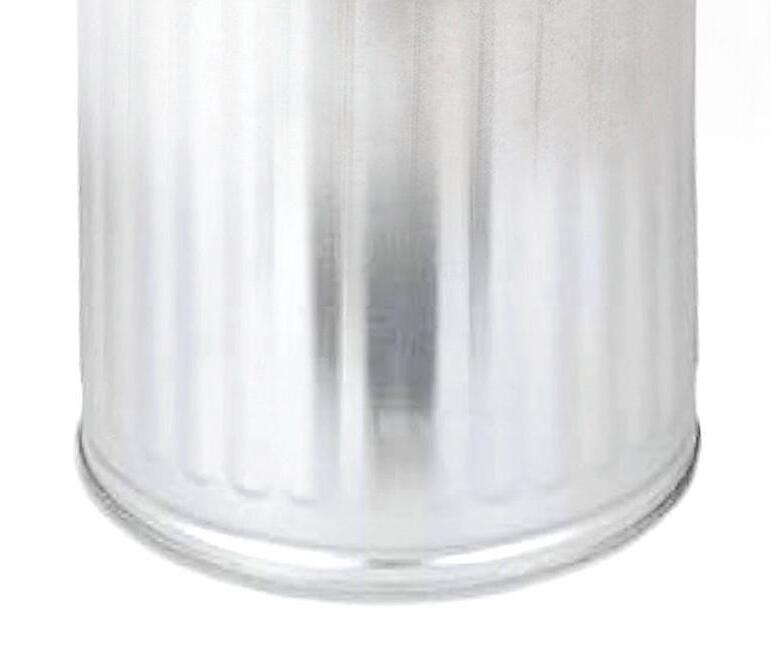
Denmark are among the only high-income countries in the world that do not provide school meals.
The programme has also been viewed as a possible solution to food waste. Australian households throw away more than seven million tonnes of food every year, which government data found 70 percent of was still edible. Commentators have also suggested that a solution to food insecurity will affect Australian students’ learning ability.
A national school lunch programme is just one of 35 suggestions from the agriculture committee, which has also asked for a national plan for food and a federal minister to implement it. H



By incorporating
Good nutrition supports Children’s learning and well being. Our products are designed to be not only tasty but also:
• Quickly and easily cooked from frozen
• Vegetarian and Vegan lines
• Minimum of a 4 NZ Health Star Rating
• High in Protein
• Low in Cholesterol
• Good levels of fiber
• Low allergen rate
• 100% Soy free
• 100% sustainable

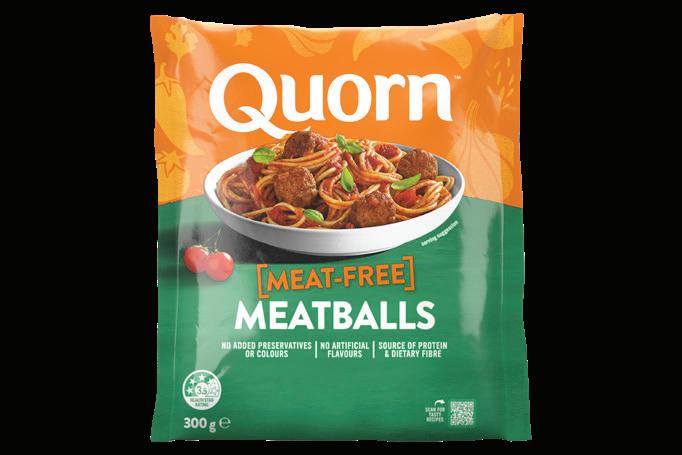

Quorn Vegetarian:
• Mince
• Chicken Pieces
• Meatballs
• Roast
Quorn Vegan:
• Sausages
• Nuggets
• Buttermilk Fillets

 Quorn into your lunch, you’re doing more than just serving meals. You’re fostering healthier eating habits, making a positive impact on the environment, and reducing the carbon footprint associated with meat production.
Quorn into your lunch, you’re doing more than just serving meals. You’re fostering healthier eating habits, making a positive impact on the environment, and reducing the carbon footprint associated with meat production.
As the school year for 2024 is ushered in, the same issues regarding children’s nutrition still linger.

KidsCan has continued its commitment to making a difference for school-aged children around the country who need proper nutrition at home and school. KidsCan has highlighted the fact that child poverty is still a severe issue in New Zealand, with an average of one in six children.
Since 2005, KidsCan has worked to provide the essentials to Kiwi Kids affected by poverty so that they can have the opportunity to learn and have a better future.

The Child Poverty Monitor 2022 indicated that 1.1 percent of children in New Zealand experience material hardship and lack sufficient food.
KidsCan believe that this affects a child’s ability to succeed in school. KidsCan CEO and founder Julie Chapman said that these conditions can make a child’s time in the classroom much more difficult.
“Children can’t engage in learning when they’re hungry - it’s that simple,” said Chapman.
“It’s vital to fuel students through the day, so we provide breakfast items and healthy snacks designed to give students as much fuel as possible, knowing they may not be eating much at home.”
KidsCan assists with feeding more than 55,000 students in nearly 900 schools across New Zealand. The charity has also provided hot meals to its partner schools that don’t qualify for the government’s Ka Ora, Ka Ako free school lunch programme.
Chapman said that the list of students who need KidsCan’s support has only continued to grow.
“We have thousands of students in 77 schools waiting for support, and our aim for 2024 is to reach as many of them as funding allows.”
KidsCan has noticed the necessity for proper nutrition for students in schools, as the effects of going without can lead
to lasting implications for the rest of their school life.
“Achieving a school qualification is directly linked to economic potential later in life. In the past, those without a qualification have earned 51 percent less than those who continue in school to National Certificate of Educational Achievement (NCEA) Levels two and three.”
Chapman said that providing practical support, such as food, will give children what they need to help make the most of their education. She added that placing the blame on the government, or even parents or society, will not solve the issue of child poverty. She said that it is vital to give support to every child who is in need of it.
The cost of living crisis is the latest road bump for tackling New Zealand’s child poverty issue. Following in the footsteps of the Covid-19 pandemic, Chapman said every little bit can make a difference.
“We’ve seen donations continue to drop as Kiwi’s budgets are squeezed by the cost of living crisis - so we’re urging individuals or businesses who can afford to help to donate. It’s crucial for students in hardship to start their day with a full tummy, because education provides a pathway out of poverty.” H


The New Zealand Dental Association has recommended that school-aged students switch sugary drinks to water.
In order to reduce the intake, the association has called upon schools and other organisations to adopt a water and milk-only approach and pushed for legislation under the last government to ban sugary and unhealthy drinks from schools across the country altogether.
Sugary drinks, also known as sugarsweetened beverages, were listed in a report by the association as the major source of sugars consumed by young people in New Zealand. This included any beverage with added sugar, such as carbonated fizzy drinks, energy drinks, sports drinks, fruit drinks and juices, powdered drinks, and cordial and flavoured waters. The report also outlined the strong recommendations from the World Health Organisation that suggested the intake of free sugars should be reduced to less than 10 percent of total energy intake, approximately 12 teaspoons per day per adult.
Robin Whyman of the New Zealand Dental Association said sugary drinks should simply not be present in schools and learning centres at all.
“At that age, we are dealing with
developing and vulnerable teeth. Sugar is a driving force for tooth decay, even for children as young as five years old. Tooth decay from a young age can also lead to tooth decay in adult teeth, of which sugary drinks can well be a cause for,” said Whyman.
Sugary drinks have become accessible to school-aged students as they are cheap, readily available and accessible, and one
of the most widely advertised products. The report indicated that most beverages that children identified with sports were sugary drinks, with only 17 percent from categories classified as ‘everyday drinks’ in the New Zealand Nutrition Guidelines.
Whyman said that phasing out sugary drinks in schools could be a quick process, given that a majority of schools are run by the government. He said that a


blanket ban by the District Health Board removed all sugary drinks from health centres across the country. He added that similar regulations could be appropriate for schools.
The report outlined insufficient focus on reducing the dietary cause of dental caries, with free sugars as the main dietary factor responsible for dental
caries. The association has stressed that sugary drinks significantly increase the risk of dental caries due to their high sugar content. The sugar in these drinks also increases their energy content without any useful nutrients.
The World Health Organisation has said that children and adolescents are most at risk of dental caries, reiterating

that there is a clear dose–response relationship between sugar consumption and dental caries. Also suggested by the World Health Organisation was the removal of sugar-sweetened beverages for sale and service in schools, and increased awareness that water is ‘safe for teeth’ was a priority. H


The workplace training specialist for the service sectors, ServiceIQ, is helping schools nationwide give students valued work experience with high-level NCEA achievement attached.
There are six options in the new ServiceIQ Service Sector Insights Gateway. Each awards a student at least 20 NCEA credits at Level 3, all earned from Unit Standards that are core to on-thejob training in the relevant sector.
“The options cover sectors with 87,650 employers and 559,500 jobs. The Service Sector Insights Gateway creates huge opportunities for ākonga (students), both while they are at school and after they leave,” said Doug Pouwhare, ServiceIQ General Manager – Talent Supply

Transitions and Operations.
The service sectors covered are all big contributors to the economy: retail, distribution, tourism, and hospitality – with tailored choices for cafés and accommodation.
Available to secondary schools from the start of Term 1 this year, the new Gateway options bring the total that ServiceIQ offers to 18, plus the popular Cultural Camps held during Term 1, 2 and 3 school holidays.
“We are the workplace training specialist for aviation, hospitality, retail, travel, and tourism. We partner with employers of all types and sizes from one end of the country to another. We’re also a major provider of classroom teaching resources to schools.
“This means that our Gateway programmes are carefully tailored to meet the needs of teachers, helping their students to gain skills and knowledge and to achieve NCEA credits, as well as giving students a real workplace experience and possible access to a first job and career pathway.”
ServiceIQ is one of the country’s largest Gateway providers, with an enviable success rate, including 93 percent of students fully completing their programme. H





Harvest Snaps, the leading innovator in better-for-you snacking, has proudly announced its latest accolade: the Harvest Snaps Pea Original Salted Multipack 90g (5 x 18g) has been awarded the prestigious Healthy Food Guide’s Lunchbox Awards 2024 in New Zealand in the Snacking category.
The Healthy Food Guide’s Lunchbox Awards celebrate the best-in-class products that epitomise nutritional excellence and culinary innovation. Recognising the need for convenient, nutritious snack options for families across New Zealand and Australia, the judges awarded Harvest Snaps Pea Original Salted Multipack 90g (5 x 18g) for its outstanding nutritional profile, delectable taste, and commitment to quality.
“Our team is thrilled and honoured to receive this esteemed recognition from the Healthy Food Guide,” said Alice Briant, Senior Brand Manager for Harvest Snaps at Calbee, Australia.
“At Calbee Australia, we are dedicated to crafting snacks that seamlessly blend delicious flavours with nutritional benefits. Winning the Lunchbox New Zealand Awards is a testament to our commitment





to providing families with wholesome options that don’t compromise on taste.”
The Harvest Snaps Pea Original Salted Multipack boasts a delightful crunch and savoury taste, made from real peas, and carefully seasoned with just the right amount of salt. Moreover, these snacks are 5 Health Stars, making them the perfect healthy alternative and an ideal addition to lunchboxes, snack times, or on-the-go munching.
The award-winning Harvest Snaps Pea Original Salted Multipack 90g (5 x 18g) is available at leading retailers in New Zealand and Australia, continuing to provide families with a guilt-free snacking option that’s both wholesome and delicious.
To find out more, contact: House of Fine Foods
P: 09 410 1066
E: sales@houseff.co.nz
W: https://houseff.co.nz H


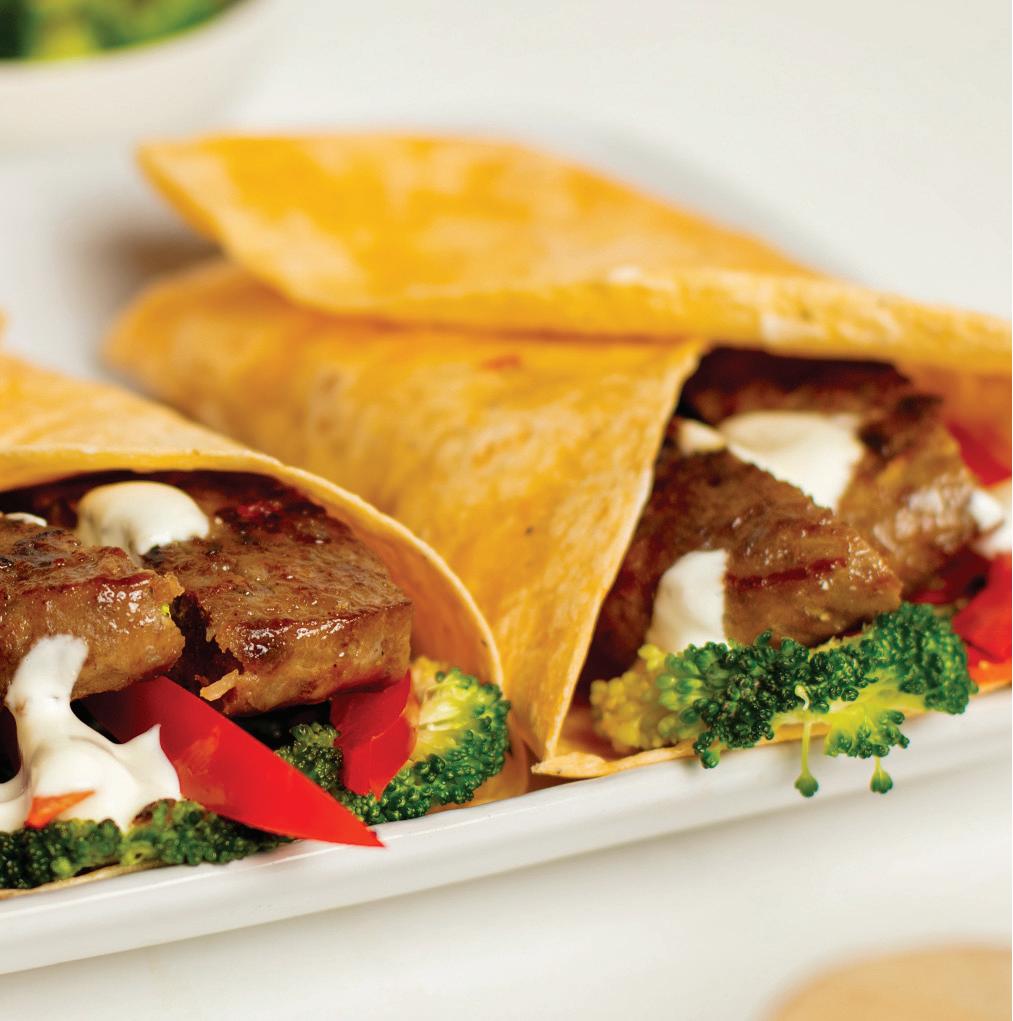

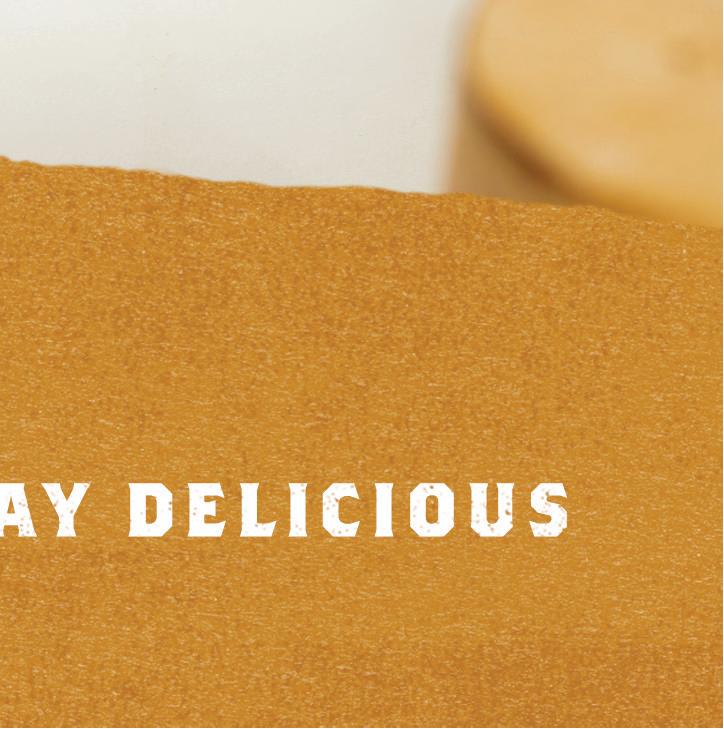
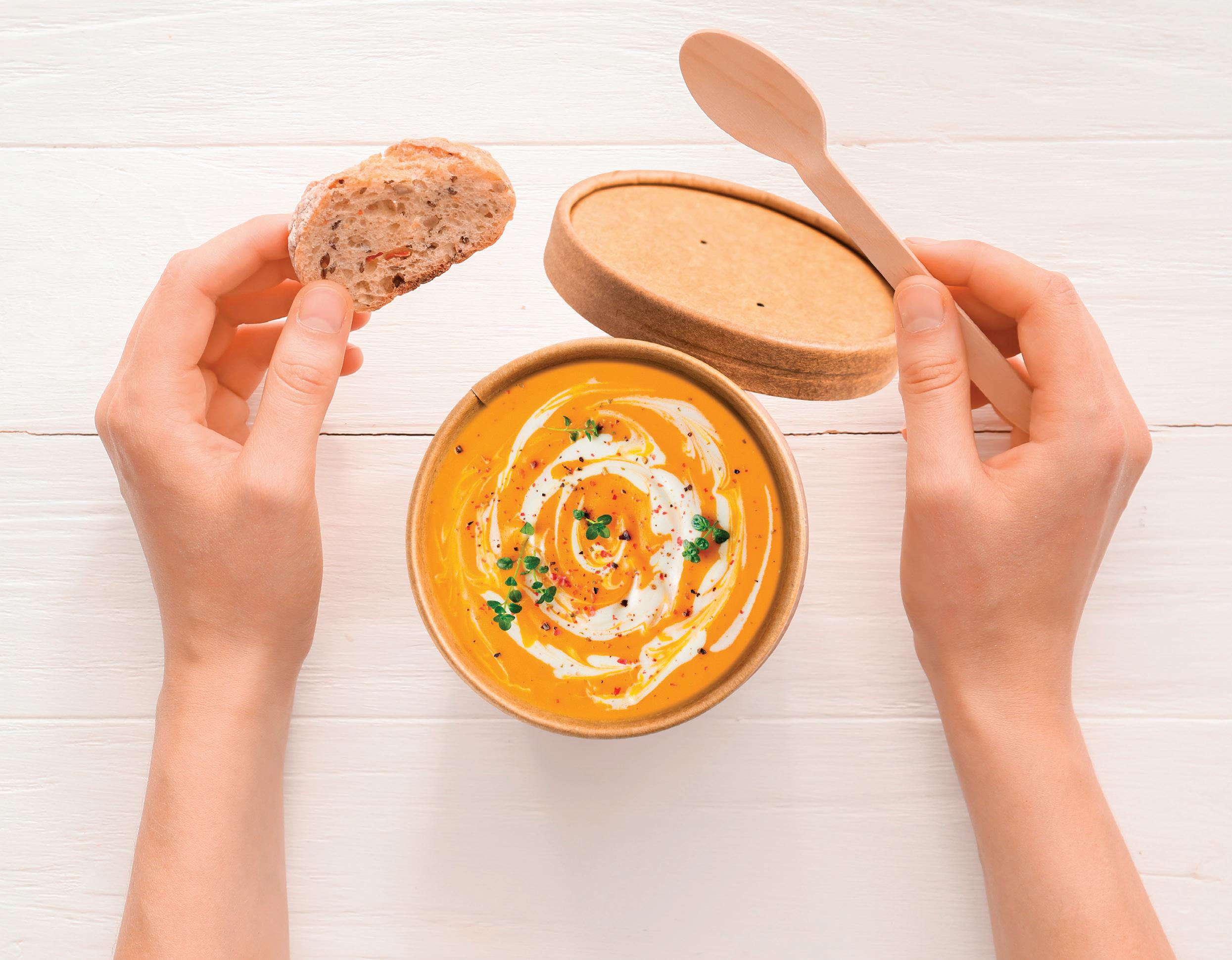

Add as a weekly offering to your winter menu
Aim for a variety of vegetables each day to support a healthy diet
Wattie’s® Soup to Go pouches contain 40%+ vegetables
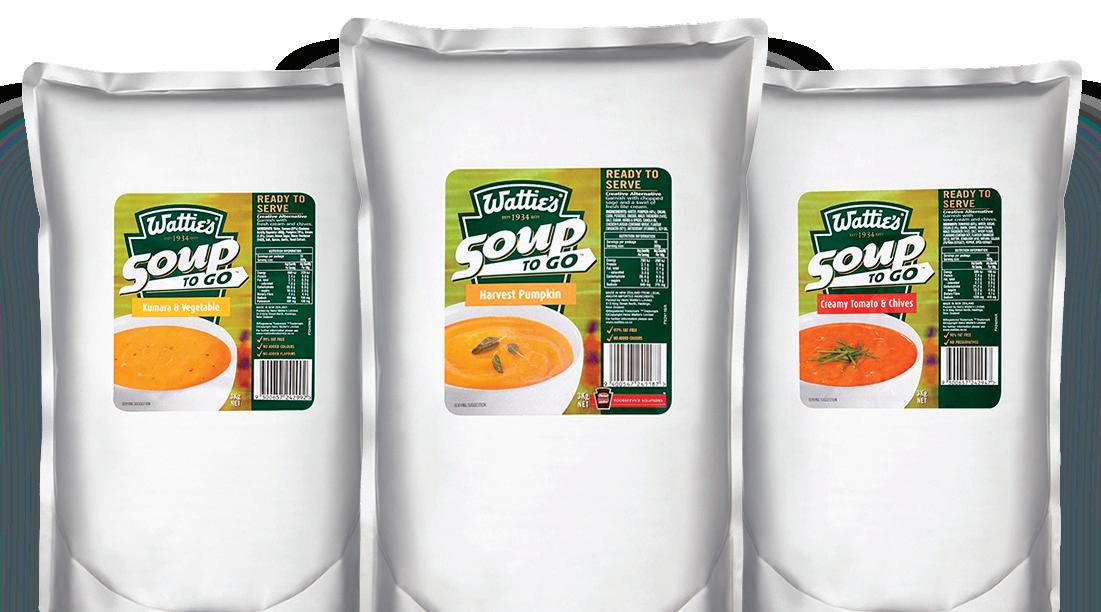

With the coalition Government’s first budget in May rapidly approaching, many suppliers anxiously await the programme’s next steps. While the previous Government introduced the scheme, suppliers are cautiously optimistic about its future. Prime Minister Christopher Luxon expressed his support for the programme whilst on the election campaign trail, but due to a three-party coalition, there is uncertainty surrounding funding.

One of the country’s largest suppliers to Ka Ora, Ka Ako, Trust House, said that the scheme not only feeds a nutritious lunch to students but also difference.
Trust House employs over across the Wairarapa region and produces approximately 3700 school lunches for students daily. Since 2020, the organisation has supplied close to
two million lunches. Therefore, it is unsurprising that Trust House believes Ka Ora, Ka Ako to be a worthwhile initiative to benefit those who need it.
Recent feedback from the Ministry of Education indicated that Trust Fund is a highly ranked programme supplier across New Zealand. The organisation reiterated that the programme had a very positive response from the wider community and the benefits a good nutritious lunch can provide.
Despite criticism from the Treasury office about the level of wastage in the scheme, organisations involved with Ka Ora, Ka Ako follow a stringent set of requirements regarding nutritional values and portion sizes and requirements around minimising waste and operating sustainability.
As with any foodservice programme, organisations involved with Ka Ora, Ka Ako conceded that there would always be a percentage of waste despite best efforts to prevent it. Leftover lunches from the programme are often redistributed for students to take home, and it is not uncommon for wider communities to benefit.
New Zealand’s largest education union, NZEI Te Riu Roa, said the Government’s decision to continue to fund the Ka Ora, Ka Ao Healthy
School Lunches programme is commonsense in ensuring successful learning outcomes for all schoolaged children who benefit from the programme.
However, NZEI Te Riu Roa said that Prime Minister Christopher Luxon has signaled that the Government will explore various routes to fully optimise the programme.
NZEI Te Riu Roa president Mark Potter suggested that any savings from the Government’s review should be redirected into education, to help teachers and support staff manage the greater levels of complexity of students’ needs in the classroom.
“The ministry’s briefing to incoming ministers clearly shows the funding situation is tight and that even shallow cuts are likely to impact core services, including learning support,” said Potter.
“Although the Ministry said it will continue to recruit for vacant learning support roles, such as speech-language therapists and early intervention teachers, the Government needs to invest significantly more into learning

“The ministry’s briefing to incoming ministers clearly shows the funding situation is tight and that even shallow cuts are likely to impact core services, including learning support.”
NZEI Te Riu Roa president Mark Potter
support after decades of woeful underfunding in order to fully meet the learning needs of our tamariki.
Potter added that schools also need smaller class sizes, professional learning
for teachers, and a teacher aide for every class rather than recycling failed initiatives like increased testing and charter schools. H


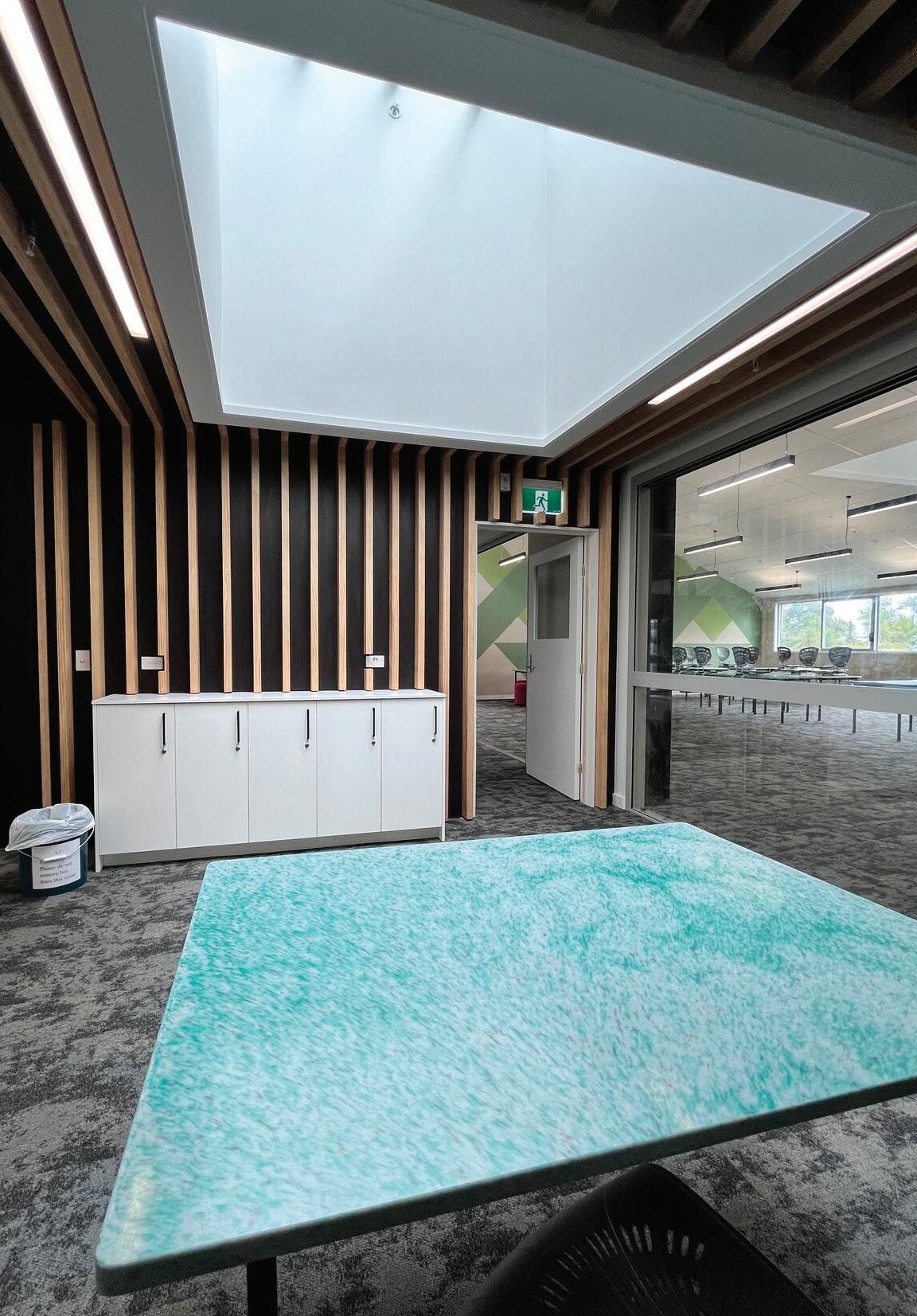
Manurewa High School’s rollout of Critical. Cleanstone as replacement classroom table tops is in full swing. With the recent launch of the school’s newly renovated science block fit-out, Critical. has proven it can elegantly extend the life of Aotearoa’s approximately 165,000 school desks for future generations.
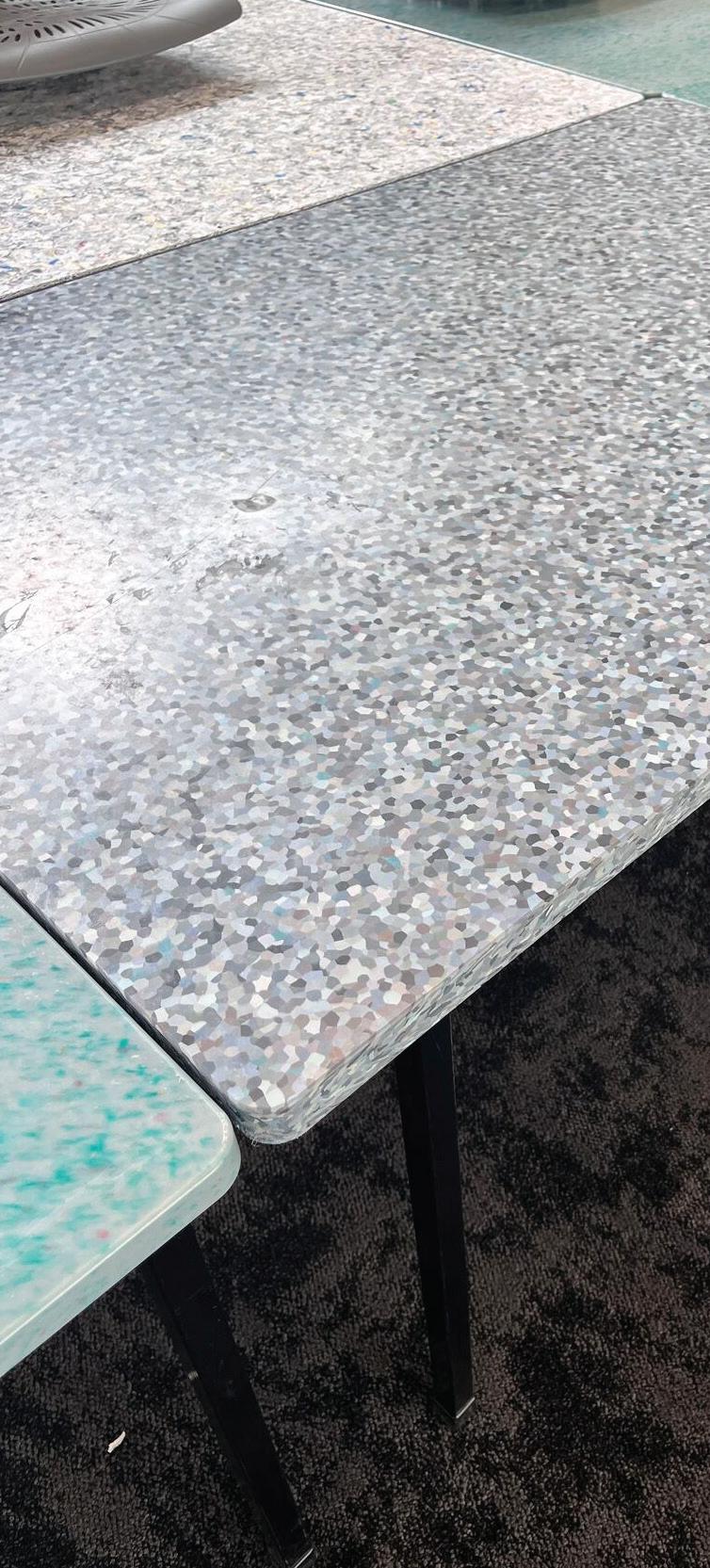

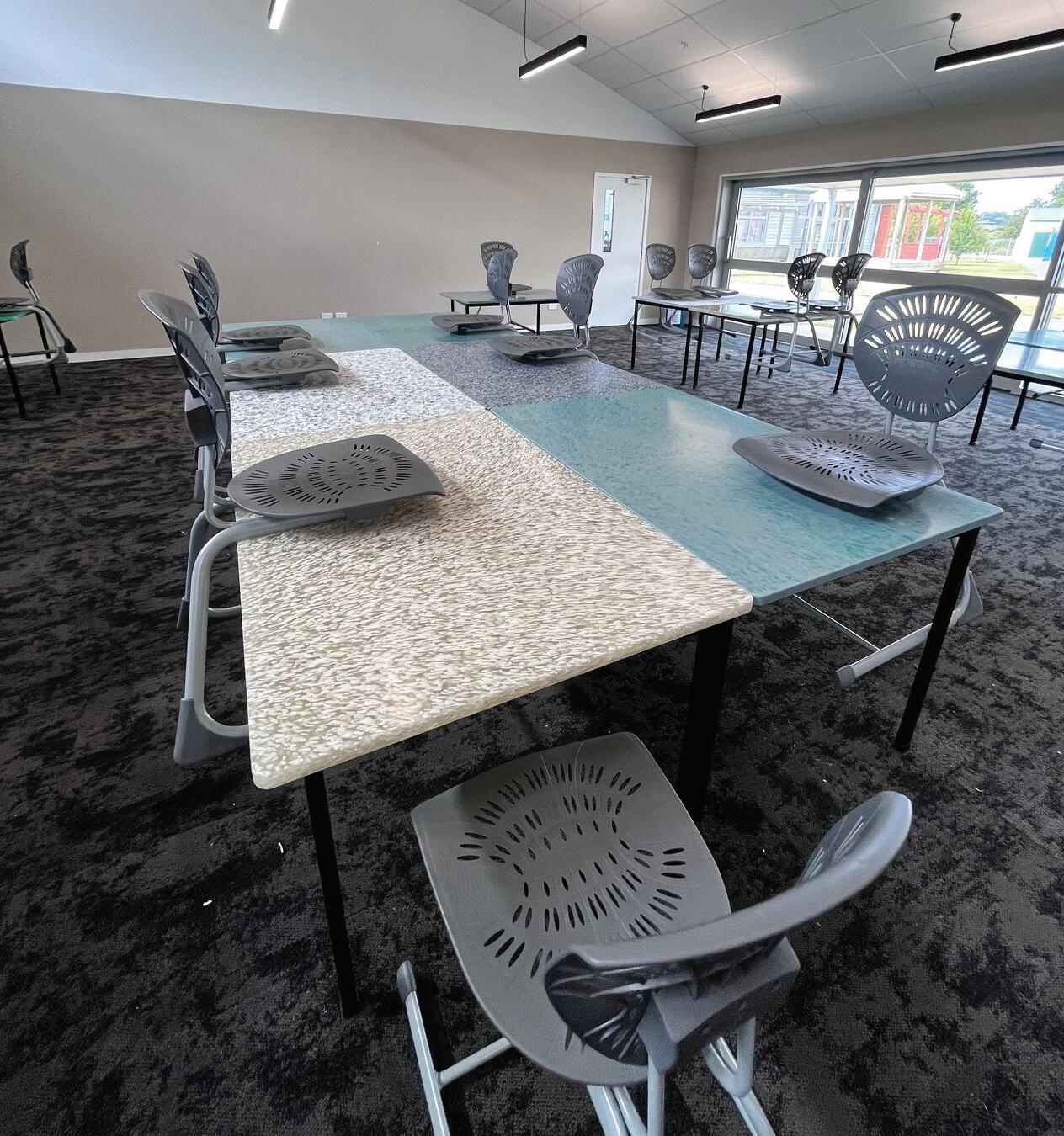
With most to all of Critical.’s classroom tabletops made in laminated MDF, wear and tear through everyday use can chip the veneer layer and strip the edge banding, exposing the fibreboard underneath. When that happens, moisture and liquid can swell up the table, causing mould to grow over time. As a result, the entire unit, including the metal legs, is discarded into a landfill.
With Cleanstone being made from a solid block of 100 percent recycled Aotearoa plastics, it’s durable, fully waterproof, and highly impact resistant. Made from discarded plastic waste from ocean plastics to commercial waste to post-consumer plastic packaging, there’s no veneer layer or edging, and it’s simple to maintain. The surface can be re-sanded or buffed every seven years or as required. At the end of a generation of use, Cleanstone desktops can be returned to be recycled into new Cleanstone.
Manurewa Highschool replaced the laminate table tops with Cleanstone and screw fixed it onto existing desk
Continued from pg 21.
frames they had resprayed black. The school selected a range of Cleanstone mixes that included Forest, Marble, Kererū, Clear, and a custom Pika mix to compliment the natural tones of their science block interior. Critical. co-founder Rui Peng said the result was stunning.
“I have to thank Pete Jones for his incredible vision of sustainability and innovation, as well as his care and attention in listening to what matters to ākonga and making it happen. We were thrilled to be a small part of his wonderful kaupapa,” said Peng.
Peng added that he would share more about the story behind each Cleanstone tabletop Manurewa Highschool selected at a later date. He said that principals looking to refit school areas or replace classroom furniture should consider replacing table tops with Cleanstone. H



We have the packaging solutions to suit your menu
Huhtamaki has a wide range of solutions to cater to multiple applications. Made from rapidly renewable materials such as sugarcane and bamboo, our range is responsibly sourced and certified.










Sourced Responsibly. Disposed of Thoughtfully.
Where






Call Caroline on (09) 304 0142 ext 703
or caroline@reviewmags.com